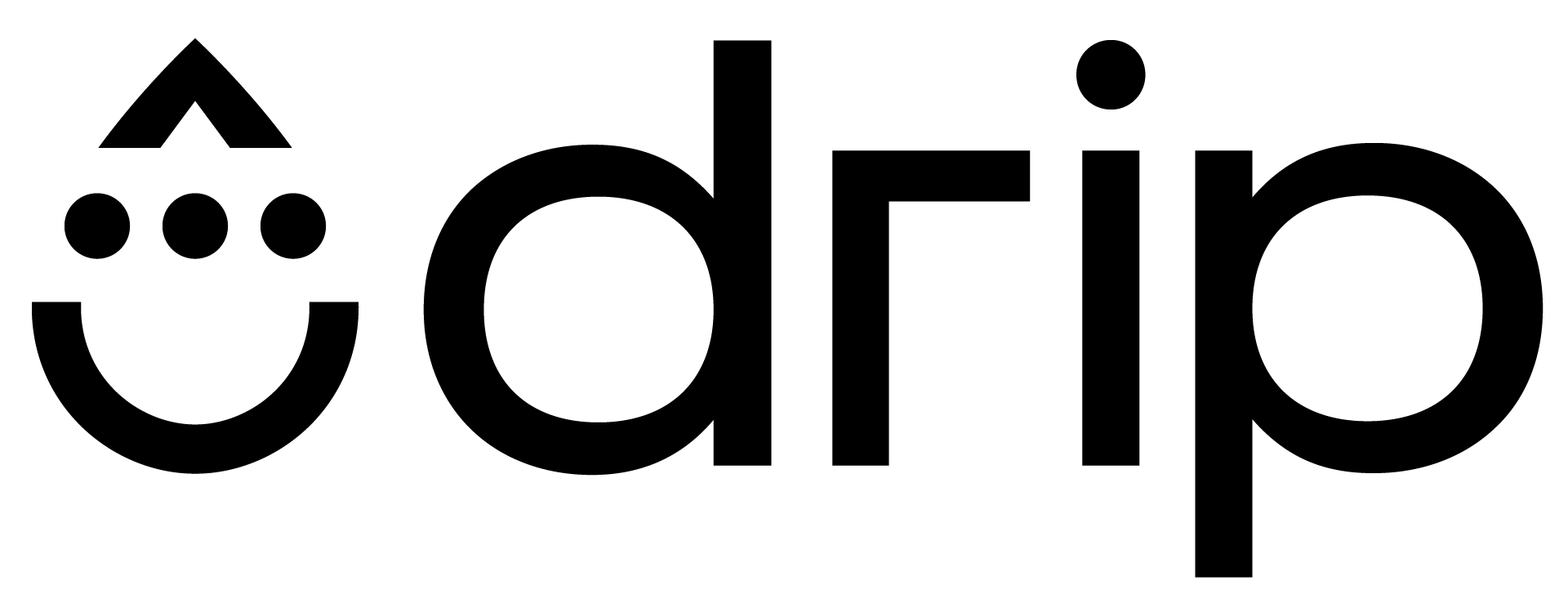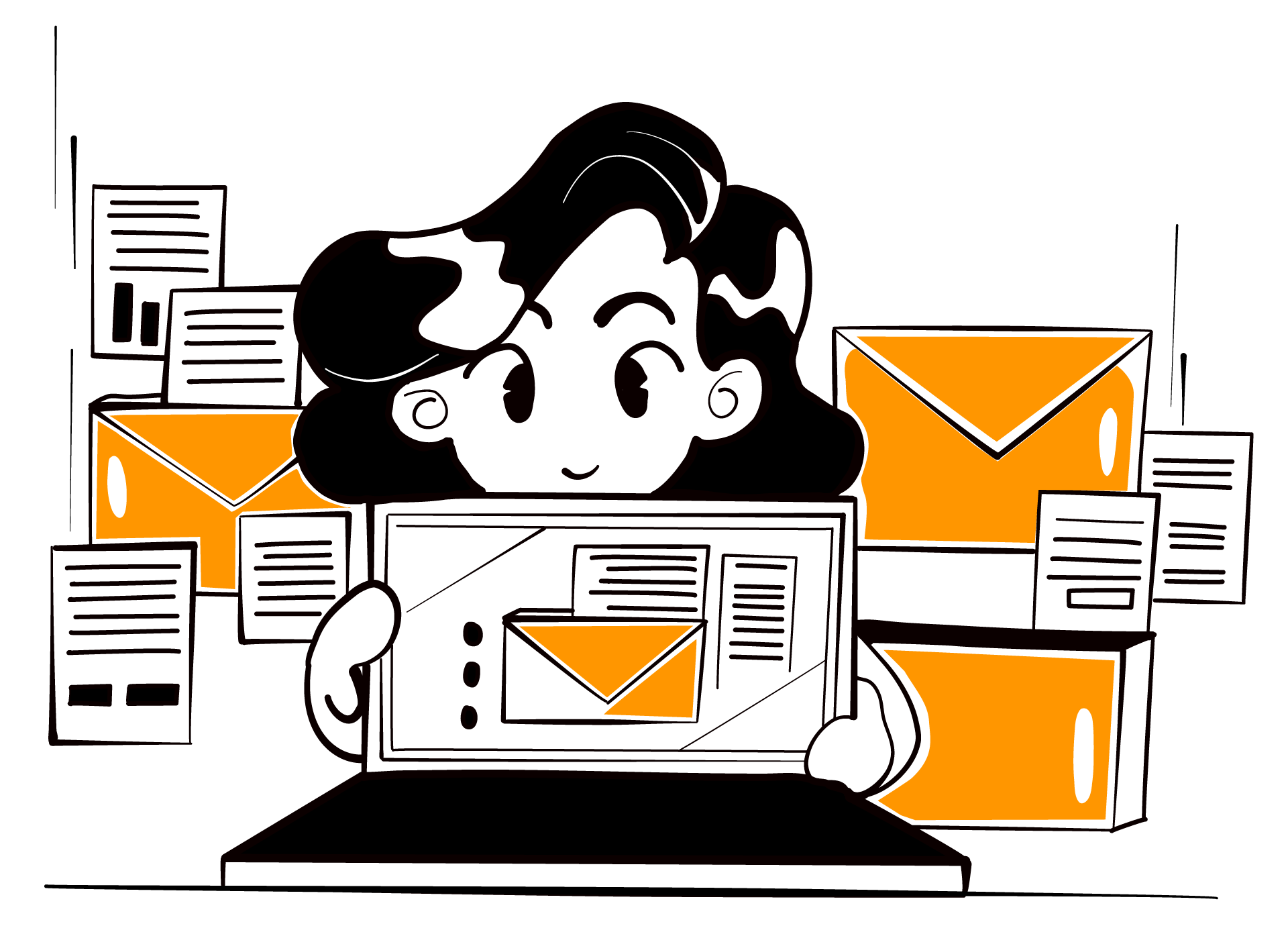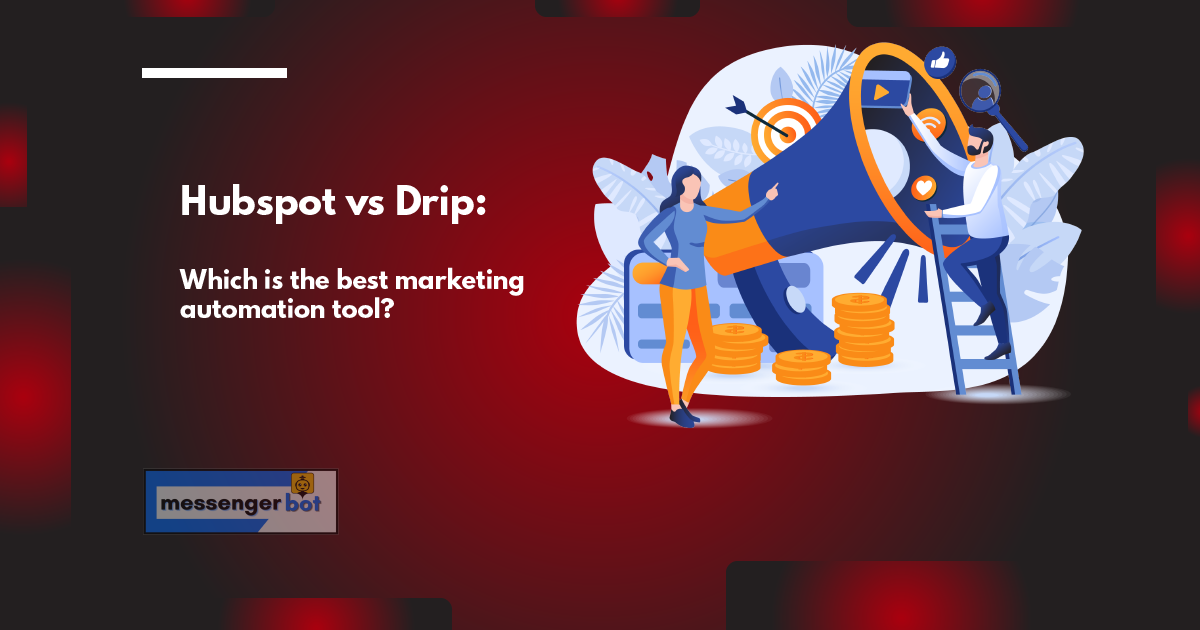Hubspot and Drip are two of the most popular marketing automation tools. It is difficult to say which one is better. They both offer a lot of great features and benefits, but they also have their own strengths and weaknesses. In this post, we will compare Hubspot vs Drip by looking at the pros and cons for each tool. We will also give you some tips on how to decide which one is best for your company!
What is the difference between direct mail vs email marketing?
Direct mail is a physical piece of mail that is sent to a customer’s house, while email marketing is the act of sending messages to customers through their email inboxes. Email marketing has many advantages over direct mail, including lower costs, faster turnaround times, and the ability to reach more people. Additionally, email marketing allows you to track how many people open your emails, which direct mail cannot do.
They differ in terms of delivery. Email is delivered electronically to the recipient’s inbox, while direct mail is a physical item that is sent through the mail.
They differ in terms of purpose. Email marketing is used to promote a product or service, while direct mail can be used for a variety of purposes, including promoting a product or service, fundraising, and customer retention.
What is Drip?

Drip is an all-inclusive marketing automation platform that helps businesses engage with their leads and customers. From creating personalized support messages to sending automated emails, Drip can offer everything you need in one place at a very reasonable price.
Drip is easy to use for small business owners who don’t have the time or technical knowledge needed to manage complex marketing automation tools.
Drip also integrates with many popular applications, such as Salesforce, Shopify, WordPress, and more. This makes it easy to manage your most important marketing tasks – without having to jump between different tools.
O que é o HubSpot?

Hubspot is a marketing automation tool that helps businesses grow their website traffic, convert leads into customers, and track their success over time. It offers a wide range of features, including email marketing, social media campaigns, landing pages, and lead scoring. Hubspot also has a built-in CRM (customer relationship management) system to help you keep track of your interactions with current and prospective customers.
Pros of Drip
The pros of Drip are its affordability, easy-to-use interface, and great customer support. Drip is also very customizable, which allows users to create the perfect automation workflow for their business. Additionally, Drip offers a wide range of integrations with other software programs, making it an extremely versatile marketing automation tool.
Prós do HubSpot
Hubspot is a comprehensive marketing automation tool that can help you with a variety of tasks, from email marketing to lead nurturing. It offers a wide range of features and is relatively easy to use.
Hubspot has a lot of features, including email marketing, lead nurturing, and CRM integrations. It’s also relatively easy to use, which makes it a good choice for smaller businesses that don’t have a lot of experience with marketing automation tools.
Hubspot also offers a wide range of training and support options, including tutorials, webinars, and an extensive knowledge base. And if you need help, you can always contact customer support.
Drip vs HubSpot Features Comparison
Both Drip and HubSpot are popular marketing automation tools, but which one is the best for your business? Here’s a comparison of their features so you can decide.
Drip offers more email integrations than HubSpot, making it a better choice if you need to connect with other platforms or services. Additionally, its branding tools are more effective, allowing you to create custom emails for each customer.
HubSpot is better if you need SEO and social media integration or a lead scoring system. It also has an easier-to-use interface that’s great for beginners who don’t have any marketing experience, while Drip can be confusing at first.
This blog post will compare the features of Drip and HubSpot to help you decide which is the best tool for your business.
Email Templates and Editor

Email templates and editor are two of the most important features in marketing automation. The email editor comes with drag and drop capability, image pre-sizing, HTML editing, and a lot more to make your emails look professional while allowing you to easily add new elements for different campaigns or segments of your audience. Email templates can be designed by even the most novice user and then scheduled to be sent out at a later time. Email templates can also be used as part of drip campaigns (see below).
Email templates are defined as a collection of predefined email content that you can use to create and send out your emails quickly, without having to start from scratch every time. Email templates are also a great way to ensure that all your emails have a consistent look across different campaigns or segments.
The drag-and-drop editor makes it easy for you to add new elements, for example for new campaigns. It also allows you to easily resize images and edit HTML code, which can be especially useful if your emails contain special effects or other advanced design elements.
Drip’s email templates and editor work in a similar way as the ones found on most other marketing automation software. Templates are defined as a collection of predefined email content that you can use to create and send out your emails quickly, without having to start from scratch every time. Email templates are also a great way to ensure that all your emails have a consistent look across different campaigns or segments.
Drip’s email editor comes with a wide range of features, including drag and drop, image pre-sizing, HTML editing, and more. This makes it easy for you to create professional-looking emails without having to know any coding languages. You can also use the email editor to easily add new elements for different campaigns or segments of your audience.
Hubspot’s email templates and editor are a little more advanced compared with Drip’s. Hubspot has a lot of features that most marketing automation tools have, such as image pre-sizing and HTML editing capabilities for professional-looking emails without having to know any coding languages yourself. Combined with their drag-and-drop editor, you can easily create new elements or edit existing ones so that they fit with your campaign.
Having easy access to email templates can be very beneficial for marketing automation users as this allows them to save time on creating new emails every time they are sending out something related to their business. The email templates can be used as a basis for new campaigns, or as part of drip campaigns (see below), which can then be scheduled to be sent out at a later time. This ensures that all your emails have a consistent look and feel across different campaigns or segments. Additionally, the drag-and-drop editor makes it easy for you to add new elements or edit existing ones so that they fit with your campaign.
In terms of email templates and editor, Drip and Hubspot work in a similar way. Both marketing automation tools come with drag-and-drop editors where images can be resized, HTML editing capabilities for professional-looking emails without having to know any coding languages yourself, as well as pre-sizing of images. Combined with their email templates, you can easily create new elements or edit existing ones so that they fit with your campaign. Hubspot’s email templates and editor is a little more advanced when compared to Drip, but for the most part, both offer similar features. Having easy access to email templates can be very beneficial for marketing automation users as this allows them to save time on creating new emails every time they are sending out something related to their business. Additionally, the drag-and-drop editor makes it easy for you to add new elements or edit existing ones so that they fit with your campaign. If you are looking for a marketing automation tool that comes with easy access to email templates and an intuitive drag-and-drop editor, Drip and Hubspot are both great options.
List Management

List management is an essential part of marketing. It allows you to keep track of your subscribers and their interests, which makes it easier to target them with relevant content. It is defined as the process of creating, managing, and executing marketing lists.
There are a few different ways to create lists: you can import subscribers manually or add them automatically via integrations with other tools. You can also segment your list based on various factors, such as demographics, interests, or past behaviors. This allows you to send more relevant content to specific groups, increasing the likelihood that they will engage with your emails.
Drip’s list management is very comprehensive. It allows you to import subscribers manually or automatically, as well as segment them based on various factors. You can also create custom fields to track additional information about your subscribers. This gives you a lot of flexibility in terms of how you target your audience.
Drip also offers a number of powerful automation tools that let you automatically add or remove subscribers from lists based on their behavior. This helps you to keep your list up-to-date and ensure that only the most relevant content is being sent to your subscribers.
Hubspot’s list management is very similar to Drip’s. You can import subscribers manually or automatically, segment them based on various factors, and create custom fields for extra information. They also have a comprehensive set of automation tools that allow you to add or remove subscribers from lists based on their behavior.
Hubspot also offers some more advanced tools that Drip does not, such as lead scoring and personalized follow-up emails. Unfortunately, these features require you to upgrade your account.
In terms of list management, Drip and Hubspot are very similar. Both tools allow you to import subscribers manually or automatically, segment them based on various factors, create custom fields for extra information about your subscribers, and apply automation rules that target specific groups with relevant content.
The only major difference is whether or not you can access advanced lead scoring features without upgrading your account.
Reporting and Analytics

Reporting and analytics are essential in marketing automation. Marketing agencies need to know if their campaigns are working and the best way is through reporting tools that provide data on open rates, click-throughs, conversions etc so they can change strategies accordingly.
Reporting and analytics is defined as the process of collecting, analyzing and reporting on data to help make informed business decisions. In the context of marketing, this would include metrics such as website traffic, conversion rates, email open and click-through rates etc.
Drip’s reporting and analytics is very comprehensive. It includes data on website traffic, conversion rates, email open and click-through rates etc but also provides insights into the individual behavior of subscribers – such as who opened your email, clicked a link or unsubscribed. This allows agencies to see what’s working well and where they need to make changes.
Drip has powerful reporting built into the platform that allow you to easily see what’s happening in your campaigns. You can pull reports on anything from open rates, click-throughs and unsubscribes, to customer lifetime value etc – all with a couple of clicks.
You’d be able to access real time data too so if somebody opens or clicks through your email you can see that straight away.
Hubspot’s reporting and analytics differs from Drip in that it offers a little more in terms of automation. For example, Hubspot can automatically send out reports to relevant stakeholders based on predefined criteria.
HubSpot also offers built-in tools for social media reporting and marketing ROI analysis. This allows you to track how your social media campaigns are performing and see the return on investment (ROI) of your social media efforts.
In terms of reporting and analytics, Drip offers a slight edge over Hubspot. This is because it provides more detailed insights into individual subscriber behavior that allows agencies to make better informed decisions based on data.
However, both platforms are great tools and offer powerful reporting abilities for marketing teams to stay on top of their campaigns. The key thing here is deciding what’s important in your agency and choosing a tool that offers those features.
Agencies can also test both platforms to see which one works best for them before making a decision. Either way, reporting and analytics are essential in marketing automation so you’ll want to choose a solution with comprehensive data reports built-in!
Geração de leads

Lead generation is the process of finding potential customers or clients.
There are many ways to generate leads, including inbound marketing which includes social media and SEO; paid advertising with Google Adwords or Facebook ads; email marketing via an autoresponder like Drip; PR (press releases); events/trade shows; and content marketing (blogs, ebooks, white papers, etc.).
Lead generation is important because you always need to have the next potential customer ready in case they should come knocking.
Drip’s lead generation is very similar to other autoresponders. Drip allows you to create email sequences that are triggered by different events within your marketing automation platform, such as when someone subscribes or unsubscribes from a list.
Drip’s lead generation revolves around capturing emails and using them for marketing purposes like newsletters, sales outreach, etc., but it can also be used to onboard new customers, too.
Hubspot is more of an all-in-one solution so it has many additional features for lead generation, including web forms and landing pages, and forms for data collection.
Hubspot does not offer email sequences like Drip but it can be used in conjunction with other marketing automation systems to enhance lead generation efforts.
HubSpot’s lead generation capabilities are very similar to what you get from a standalone autoresponder. You can create landing pages, forms, and pop-ups to collect email addresses. HubSpot also has a built-in lead magnet tool that allows you to create ebooks, cheatsheets, or other types of content offers in exchange for an email address.
Hubspot generate lead in a different way in that they offer tools to help you create landing pages and forms. Hubspot also offers a free CRM (customer relationship management) tool, which helps businesses keep track of all their leads and customers in one place.
In terms of lead generation, Hubspot and Drip are very similar. Both offer email marketing with autoresponders, which allow you to create sequences of emails that can be sent automatically when someone subscribes or unsubscribes from a list.
Also, both Hubpost and Drip have tools for creating landing pages and forms to collect more information on interested leads.
Forms & Popups

Forms & popups are important because they are the most direct way to get in touch with your customers.
A form is a series of fields where people can manually input their information for you, so you don’t have to spend time searching through databases looking for it. A popup will appear/pop up on top of whatever page or window someone is currently viewing, and they’ll have to click the “X” in order for it to go away.
Popups and forms are both really effective ways to get in touch with customers because they’ll be able to input their information and you can segment them based on what products or services that give to your business.
Drip’s forms & popups are really effective because you can segment people based on what products or services they’re interested in.
You can also track how many people sign up for your forms and popups, as well as see which pages are getting the most traffic. This will help you determine where to focus your marketing efforts.
Drip’s forms & popups are effective because you can create specific campaigns and send them to whoever fills out your form or popup, as well as see which pages on your website they come from.
Drip’s forms & popups works by tracking how many people sign up for your forms and popups, as well as seeing which pages are getting the most traffic. This will help you determine where to focus your marketing efforts.
You can also create specific campaigns and send them to whoever fills out your form or popup.
Hubspot’s forms & popups work differently than Drip’s because you can only send people to a landing page after they’ve filled out the form.
You also can’t track how many people sign up for your forms and popups, as well as see which pages are getting the most traffic. This means that you’ll have to do more guesswork to figure out where to focus your marketing efforts.
Hubspot’s forms & popups are less effective than Drip’s because you can’t track how many people sign up for your forms and popups, as well as see which pages are getting the most traffic. This means that you’ll have to do more guesswork to figure out where to focus your marketing efforts.
You also can only send people to a landing page after they’ve filled out the form, which makes it less effective than Drip’s forms & popups.
In conclusion, Hubspot and Drip are both great marketing automation tools, but Hubspot’s forms & popups are less effective than Drip’s. If you’re looking for a tool that will help you get in touch with your customers and segment them based on what products or services they’re interested in, then Drip is the better choice.
If you want to learn more about Hubspot and Drip, head over to our website and check out our comparison chart.
Marketing por E-mail

Email marketing is one of the most direct and personalized ways to communicate with your customers.
Email marketing is a great way to engage customers who have signed up for email updates from you or those that might be interested in learning more about your products or services. There are many examples of successful businesses, including Amazon, Zappos, Apple and Netflix who use email marketing to keep in touch with their customers and drive traffic back to their websites.
Email marketing is a powerful tool that can help you achieve your business goals, such as increasing website traffic, driving sales and building relationships with customers. However, it’s important to use email marketing correctly or you could damage your reputation and lose potential customers.
Drip’s email marketing platform helps you grow your business by delivering the right message to the right person, at the right time. Drip’s marketing automation platform is built on customer journeys and integrates with all of today’s top web services such as Salesforce, Shopify and MailChimp.
Drip has a visual interface that makes it easy for marketers without coding experience to use powerful marketing automation workflows.
The email marketing of Drip is available for free and with the paid plan you get access to advanced features such as greater control over email campaigns, better reporting tools and a fully customizable drip campaign editor.
Hubspot’s email marketing platform is different from Drip’s in that Hubspot offers a more holistic view of your customer relationships. Hubspot’s Marketing Automation tool lets you create powerful workflows to help you better understand and engage your customers.
Hubspot also includes features such as social media monitoring, website analytics and contact management so that you have a complete view of your customers.
Hubspot is very different to drip, as it includes many other features that are not available on the drip platform such as website analytics and social media monitoring. You can use all these tools together or individually depending on what you feel will work best for your business.
Hubspot is also different in that it offers a more holistic view of your customer relationships, which can be extremely valuable for businesses who want to better understand and engage their customers.
In terms of email marketing, Hubspot and Drip are two leading marketing automation platforms that can both help you deliver the right message to the right person at the right time. However, Hubspot has a more holistic view of your customer relationships and offers many other features such as website analytics and social media monitoring which may be important for businesses who want to better understand their customers in order to drive sales and build relationships. Drip is a great platform for businesses who want more control over their email campaigns and better reporting tools. Whichever platform you decide to use, make sure you take the time to learn how it works and what it can do for your business before starting to use it.
SMS Marketing

SMS marketing is a powerful way to communicate with your customers while they are on the go. When you send SMS marketing messages, all that is required from recipient’s end is a simple click of a link within an SMS message and their contact information which can be collected either during signup or at any point later in time.
SMS marketing is defined as the practice and method of using mobile text messaging to communicate with customers. It is a direct marketing technique in which marketers send texts messages to their targeted consumers on any topic, news or updates related to business promotions etc.
Drip’s SMS marketing is slightly different than other SMS marketing tools because it allows you to send automated messages in addition to one-time blasts. You can also use Drip’s SMS marketing tool to target subscribers by location, which is a great way to reach people when you’re running an event or promotion near them.
The SMS marketing of Drip can be automated and they also provide the facility to target people based on their location which is a great way of reaching out when you are hosting an event or promotion near them.
Hubspot’s SMS marketing tools are much more powerful than Drip’s and they also allow you to segment your lists by location, which is a great way of reaching people when hosting events or promotions near them.
Hubspot differs from drip in their SMS marketing in terms of their power. Hubspot also segments lists by location which is great for hosting events or promotions near recipients.
In terms of SMS marketing, Drip and hubspot have a number of similarities as well as differences. Drip is great for one-time blasts, while Hubspot is better for automated messages. Drip also allows you to target subscribers by location, which can be a powerful tool if you’re running an event or promotion near them. Ultimately, the best marketing automation tool for your business will depend on your specific needs and goals.
In conclusion, both Drip and Hubspot have their own pros and cons. Drip is great for one-time blasts while hubspot offers automated messages with the ability to segment lists by location which can be a powerful tool when hosting events or promotions near recipients. Also, note that the best marketing automation tool will depend on your specific needs and goals of business.
Automação

Automation is the use of technology to carry out a task or process that would otherwise be done by a human. In marketing, automation is used to streamline and automate tasks such as email marketing, social media campaigns, and lead management. Automation can save marketers time and energy while also increasing efficiency and ROI.
Automation is important in marketing because it allows marketers to focus on more strategic tasks. Automation can also help improve communication with customers and prospects, as well as increase the effectiveness of marketing campaigns.
Drip’s automation works by allowing you to create “automation rules.” These automation rules are based on conditions that you set, such as the opening of an email or a website visit. Once these conditions are met, Drip can then carry out any action that you choose, such as sending an email or tagging a contact. You can also use Drip’s automation rules to trigger emails based on your prospect’s actions. For example, if a lead views your pricing page twice in one day then you can send them an email suggesting that they sign up for a trial of the product.
Drip’s automation rules have a number of other features as well, such as the ability to create lead scoring based on your prospect’s actions and automated workflows that send out emails when certain events take place.
Hubspot’s automation works a bit differently than Drip’s automation. Hubspot’s automation is based on “triggers” and “actions.” Triggers are events that happen, such as the opening of an email or a website visit. Actions are things that you want Hubspot to do in response to a trigger, such as sending an email or adding a lead to a contact database.
For example, you can create an automation rule in Hubspot such as “when someone views my pricing page, add them to my marketing contacts.” Once this condition is met and the action completed, then Hubspot will automatically add that lead into your marketing contacts list within your CRM system. You can also use triggers to create automation rules that send out emails when certain actions take place, such as a lead downloading a piece of content.
In terms of automation, Drip and Hubspot both offer similar features. However, Drip has more flexibility in terms of creating automation rules based on specific actions while Hubspot is better for automating marketing campaigns that are triggered by certain events (such as an email open or website visit).
Facilidade de Uso

Ease of use is a critical factor to consider when choosing a marketing automation tool. The easier the tool is to use, the more likely you are to actually use it. Hubspot and Drip both have fairly easy-to-use interfaces, but Hubspot is slightly easier to learn and navigate.
Ease of use is defined as how easily a tool can be used to perform tasks. In marketing automation, ease of use is defined as how easy it is for marketers and business owners to get started with the software, learn how to use features, and actually put those features into practice .
Drip’s ease of use can be seen through their robust, yet easy-to-use interface. They have a drag and drop email editor that allows you to create your campaigns without any technical knowledge or HTML skills.
Drip is also very good at helping you understand how to use their features. They have a robust help center with articles, videos, and tutorials that can guide you through the process of setting up your first campaign or automating your sales funnel.
Hubspot is a more robust marketing tool, allowing for deeper analytics and integrations with other tools. However, that can be said about Drip as well. Hubspot is easier to use when you have the time to learn all of its features and how they work together . In terms of ease of use, both are fairly equal in their ability to help marketers get started quickly and easily
In terms of ease of use, Drip and Hubspot are equals. Drip’s drag-and-drop editor is a huge plus, but both tools have helpful tutorials that can guide you through the process of setting up your first campaign or automating sales funnel .
Deliverability

Deliverability is one of the most important factors to consider when choosing a marketing automation tool.
Deliverability is determined by a number of factors, including the sender’s IP address reputation, the content of the email, and how often subscribers open and click through your emails.
The best way to improve your deliverability is to ensure that your emails are high-quality and relevant to your subscribers. Make sure you only send emails when you have something important to say, and make sure your emails are relevant enough that subscribers want to open them.
Ensuring high deliverability is a great way for marketers improve their emailing efforts in terms of both response rate and ROI.
Drip’s deliverability works to get your emails in front of more subscribers and increase the likelihood that they will be opened.
Drip monitors your subscribers’ engagement levels and determines which of your emails are most likely to be opened and clicked.
Drip then delivers those emails to the subscribers who are most likely to engage with them, increasing the overall effectiveness of your email marketing campaigns.
Hubspot has a completely different approach to deliverability. Hubspot is focused on improving the email experience for their subscribers, rather than increasing open rates or click-through rates.
Hubspot uses subscriptions and engagement data to determine if your emails are relevant, personalized, and well-timed.
By tracking when subscribers interact with emails (such as when they open, click through, or reply), Hubspot is able to identify which subscribers are most likely to engage with certain types of emails.
By tracking these interactions and focusing on relevance rather than deliverability alone, Hubspots ensures that their users’ relationships with their subscribers remains strong as the subscriber’s inboxes grow more cluttered over time.
No geral, Drip e Hubspot têm abordagens diferentes em relação à entregabilidade, o que pode ser benéfico em certas circunstâncias.
O foco do Drip em melhorar as taxas de abertura e cliques pode ser mais benéfico para os profissionais de marketing que buscam aumentar a eficácia de suas campanhas de email marketing, especialmente à medida que as caixas de entrada dos assinantes se tornam cada vez mais congestionadas ao longo do tempo.
A Hubspot adota uma abordagem muito única em relação à entregabilidade, monitorando as interações dos assinantes em vez de se concentrar nas taxas de abertura e cliques.
A integração da Hubspot com dados de análise de usuários a torna uma opção atraente para os profissionais de marketing cujas campanhas de email estão focadas em melhorar a experiência do usuário acima de tudo.
Drip é uma ótima ferramenta para qualquer profissional de marketing que busca melhorar seus esforços de automação de marketing em termos de taxas de abertura, taxas de cliques e a eficácia geral de suas campanhas de email.
Hubspot é uma ótima escolha em termos de entregabilidade para os profissionais de marketing que buscam melhorar a experiência de seus assinantes, além de acompanhar o desempenho das campanhas de marketing.
Em conclusão, é importante que você escolha uma ferramenta que melhor se adapte às suas necessidades como profissional de marketing.
Hubspot e Drip têm pontos fortes únicos, portanto, é importante entender como esses pontos fortes podem beneficiá-lo como profissional de marketing antes de tomar a decisão final sobre qual deles é o mais adequado para você.
Integraciones

As integrações são uma parte importante de qualquer ferramenta de automação de marketing. Integrações são definidas como "a capacidade de conectar e compartilhar dados entre várias aplicações de software".
Quando se trata disso, quanto mais integrações uma ferramenta de automação de marketing tiver com outras ferramentas que você usa no dia a dia, como provedores de serviços de email (ESPs), CRMs, plataformas de mídia social, etc., mais fácil será sua vida ao usar todas essas ferramentas em conjunto.
As integrações do Drip funcionam de maneira um pouco diferente das da HubSpot. A HubSpot possui uma "loja de integrações" onde você pode encontrar integrações para todas as aplicações com as quais trabalham. O Drip, por outro lado, tem o que chamam de "conectores". Esses conectores estão incorporados ao Drip e permitem que você se conecte a quase qualquer aplicação imaginável.
Os conectores do Drip estão integrados à ferramenta, então você não precisa procurar um conector na loja de integrações deles. Você pode criar seus próprios formulários personalizados e emails personalizados diretamente do Drip sem nunca sair dele. Isso torna muito fácil começar a usar o Drip e começar a ver resultados rapidamente.
O Drip se integra a uma tonelada de CRMs e ferramentas de marketing. Alguns exemplos são: Marketo, Pardot, Mailchimp, HubSpot (obviamente), Eloqua e Act-On.
As integrações da Hubspot são encontradas em sua loja de integrações, não estão incorporadas à plataforma. Quando se trata disso, isso não faz uma grande diferença em relação à facilidade de uso ou configuração em seu site.
A loja de integrações da Hubspot oferece mais integrações do que os conectores do Drip, mas isso não significa que todas sejam úteis para o seu negócio. Você precisará fazer uma pesquisa sobre quais integrações da Hubspot funcionarão melhor para você e sua equipe.
A Hubspot se integra a vários CRMs e ferramentas de marketing, mas não a tantos quanto o Drip. Alguns exemplos são: Salesforce, Marketo, Pardot, Mailchimp e HubSpot (obviamente).
Em termos de integrações, há muitas semelhanças entre HubSpot e Drip. A maior diferença aqui é a quantidade de integrações que cada plataforma oferece, mas isso realmente se resume à preferência na maioria dos casos.
Ambas as plataformas oferecem ótimas capacidades de integração com CRMs e ferramentas de marketing, para que você possa usar todos os seus aplicativos em conjunto ao usar qualquer uma delas para fins de automação.
Realmente depende das suas necessidades e quais aplicações você usa com mais frequência. Faça uma pesquisa sobre as integrações que cada plataforma oferece e decida qual funcionará melhor para o seu negócio. Qualquer que seja a plataforma que você escolher, certifique-se de aproveitar todas as integrações disponíveis para você!
Soporte al Cliente

O suporte ao cliente é algo que toda empresa deve ter. Se sua ferramenta de automação de marketing não oferecer, você pode ter certeza de que a concorrência oferece, então não há necessidade de se contentar com um suporte ao cliente abaixo do padrão.
O suporte ao cliente é importante porque deixa os clientes felizes e os ajuda a se sentirem mais confortáveis usando o produto ou serviço que compraram de você para fazer crescer seus negócios. Quando os clientes estão felizes, é mais provável que falem sobre você para seus amigos e continuem fazendo negócios com você.
Um bom suporte ao cliente é frequentemente o fator diferenciador entre uma boa empresa e uma ótima. É o que faz as pessoas voltarem para mais, mesmo quando há opções mais baratas ou mais fáceis disponíveis. É por isso que é tão importante investir em um ótimo suporte ao cliente.
O suporte ao cliente do Drip é de primeira linha. Eles oferecem chat ao vivo, suporte por email e até suporte por telefone. Além disso, eles têm uma enorme biblioteca de artigos de ajuda e vídeos para ajudá-lo a aproveitar ao máximo sua ferramenta.
A equipe de suporte ao cliente deles está sempre feliz em ajudar e são especialistas nas funcionalidades do Drip. Eles poderão responder a qualquer pergunta que você tenha e ajudá-lo a se configurar e começar a usar o Drip.
O chat ao vivo do Drip está disponível durante o horário comercial e você pode entrar em contato com eles 24/365 por email ou telefone.
O suporte ao cliente da Hubspot também é excelente. Eles oferecem chat ao vivo, suporte por email e suporte por telefone. No entanto, eles não têm tantos artigos de ajuda e vídeos quanto o Drip.
A equipe de suporte ao cliente deles também é muito experiente e feliz em ajudar, mas pode não ser capaz de responder a todas as perguntas que você tem sobre a Hubspot.
O chat ao vivo da Hubspot está disponível durante o horário comercial e eles também estão abertos 24/365 por email ou telefone.
Em termos de suporte ao cliente, o Drip oferece mais opções, mas a Hubspot ainda é uma excelente escolha. Ambas as ferramentas têm ótimas equipes de suporte que estão felizes em ajudar e são conhecedoras das funcionalidades de suas respectivas ferramentas de automação de marketing.
Se você precisa de muita orientação quando se trata de sua ferramenta de automação de marketing, o Drip pode ser melhor para você. Se você quer uma ferramenta que possa crescer e aprender à medida que a usa, a Hubspot pode ser melhor para o seu negócio.
Qual é melhor, Drip ou HubSpot CRM?
Drip é melhor que o HubSpot CRM. Drip é a melhor ferramenta de automação de marketing porque tem uma faixa de preço mais baixa para pequenas empresas, uma curva de aprendizado menor e pode se sincronizar com a maioria das plataformas de e-mail. Isso torna o Drip uma escolha fácil em relação ao HubSpot, que só funciona se sua empresa usar Gmail ou Microsoft como serviço de e-mail.
Embora o HubSpot tenha uma ótima interface, o Drip é mais fácil de usar e pode ser mais personalizado por empresas que estão começando. A curva de aprendizado para ambas as ferramentas é relativamente baixa, mas vale a pena o esforço, pois há muitos recursos em cada programa que as tornam opções valiosas assim que você começa a utilizá-las!




